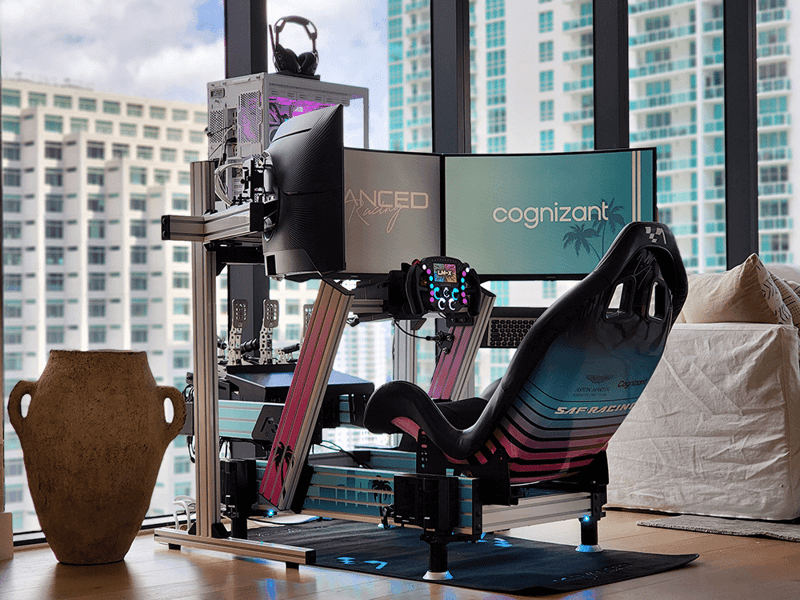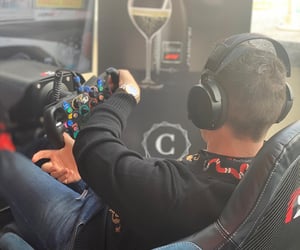Start with the base: a sim racing chassis
In the world of construction, you always have to lay out a strong foundation before you can build a home on top of it. The same can be said for sim racing—before you start thinking about all the accessories you want; you must have a solid base to build upon. In this case, the base is your chassis!
A well-built chassis is essential for a real-life race car’s performance and is equally critical for your virtual racing experience. When choosing a chassis, there are three main things you should look for: you should look for one that will provide stability, durability, and customizability options. A chassis is the main component that can make or break your rig’s overall feel, so if there was a place to invest in quality, then this is it!
The best chassis’ out there will be tubular, aluminum-profiled or comprised of metal or steel to support heavy loads without breaking or changing the consistency of your sim racing experience.
Ultimately, choosing the right chassis ensures that every turn, acceleration and braking action is transmitted seamlessly. The chassis is what sets the stage for an immersive journey into the world of sim racing!
Create your cockpit with a seat
Crafting the perfect sim racing rig goes beyond the technical components; it’s about creating an environment that envelops you in a realistic racing experience. The first step of this is choosing the right seat!
The right seat can be difficult to find but it’s crucial that you find the right one. The right seat will should be durable, preventing the need to replace or repair it any time soon!
A well-designed sim racing seat will not only provide you with the ergonomics you need during long racing sessions but also adds a touch of realism that can make all the difference. Many sim racing seats on the market today are engineered to mirror the look and feel of real race cars, which are designed to cradle you as you navigate tight corners on the track!
The seat that you choose becomes your cockpit and your connection to the digital asphalt below. It’s more than just a seat—it’s your portal to feeling connected to your virtual car! Companies such as Sparco, Corbeau, and Recaro can help you compare different models and provide you with the information you need to get started on your search.
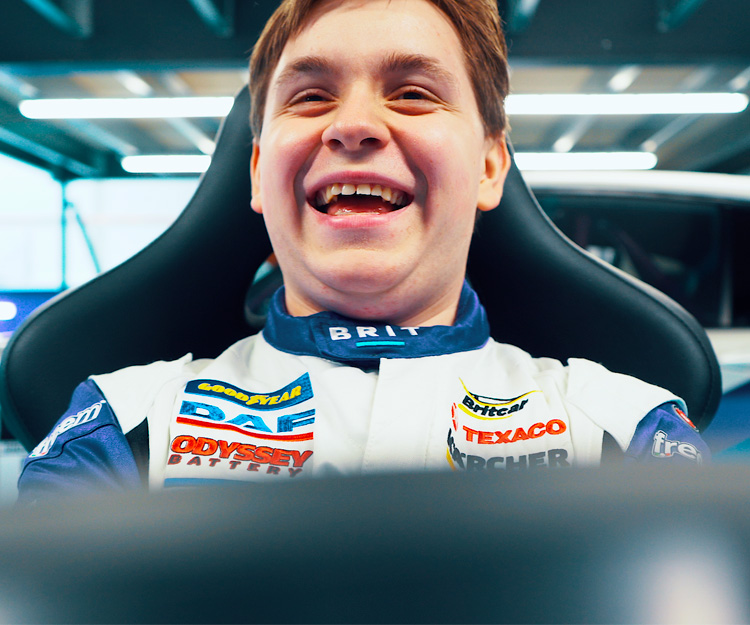
Get top-notch visuals with a top-notch monitor
While we’re used to seeing monitors as a simple display, this isn’t the case in sim racing. Your monitor is quite literally your window to the race—without it, you have no chance at victory.
When looking at what monitor to purchase, not being considerate of the power the right monitor brings would be extremely detrimental to your overall sim racing setup. A quality monitor should be carefully choses to match your rig’s capabilities in order to transform your experience from pixels to precision.
The monitor (or monitors!) you choose for your rig should feature cutting-edge graphics with a high refresh rate (the higher the Hz the better) that can translate your real-time actions into real-time visual feedback. The last thing you want is for your race to be 2 seconds delayed on your monitor, drastically reducing your reaction speed and thus your lap time! The right monitor will be one that propels your racing skills to the next level, not one that slows them down.
Other than ensuring that your monitor is responsive, most of decision will come down to personal preference. Some prefer to have one single flat monitor while others will prefer to have three curved monitors to give them a wider field of vision and more immersion. The only thing you need to look out for is that some monitors are created to be attached to a chassis while others will come with monitor stands—if you purchase one to attach to your chassis, make sure they’re compatible beforehand.
Pedal to the metal
In the pursuit of creating an authentic racing experience, every detail counts—which is why we recommend getting a pedal set for your rig. Having precise control over acceleration, braking and your clutch is paramount to crossing the finish line! A high-quality pedal set isn’t just a toy, it’s a bridge between your intentions for your vehicle and the racetrack.
When it comes to pedals, you will often be faced with a choice—the choice between hydraulic pedals and load cell pedals. Each type of pedal can significantly impact your driving experience!
Hydraulic pedals, like those found in many high-end sim racing setups, use fluid to provide resistance, mimicking the feel of a real car's brake and clutch pedals. On the other hand, load cell pedals measure the force applied directly, offering a more precise and realistic sensation. Your choice will ultimately depend on your preferences and budget, but for those seeking the utmost authenticity in their virtual races, load cell pedals are often the preferred choice.
When looking for a pedal set, we also recommend ensuring that they feel good under your feet. Just like how they say your sim racing seat should be comfortable, so should your pedals! The right set for you will fit your foot, will react in a way you anticipate it to react when you apply pressure, and will be one whose performance is consistent over time.
Companies such as Logitech, Fanatec, Heusinkveld, and Simucube can get you on your way to finding the perfect set for you.
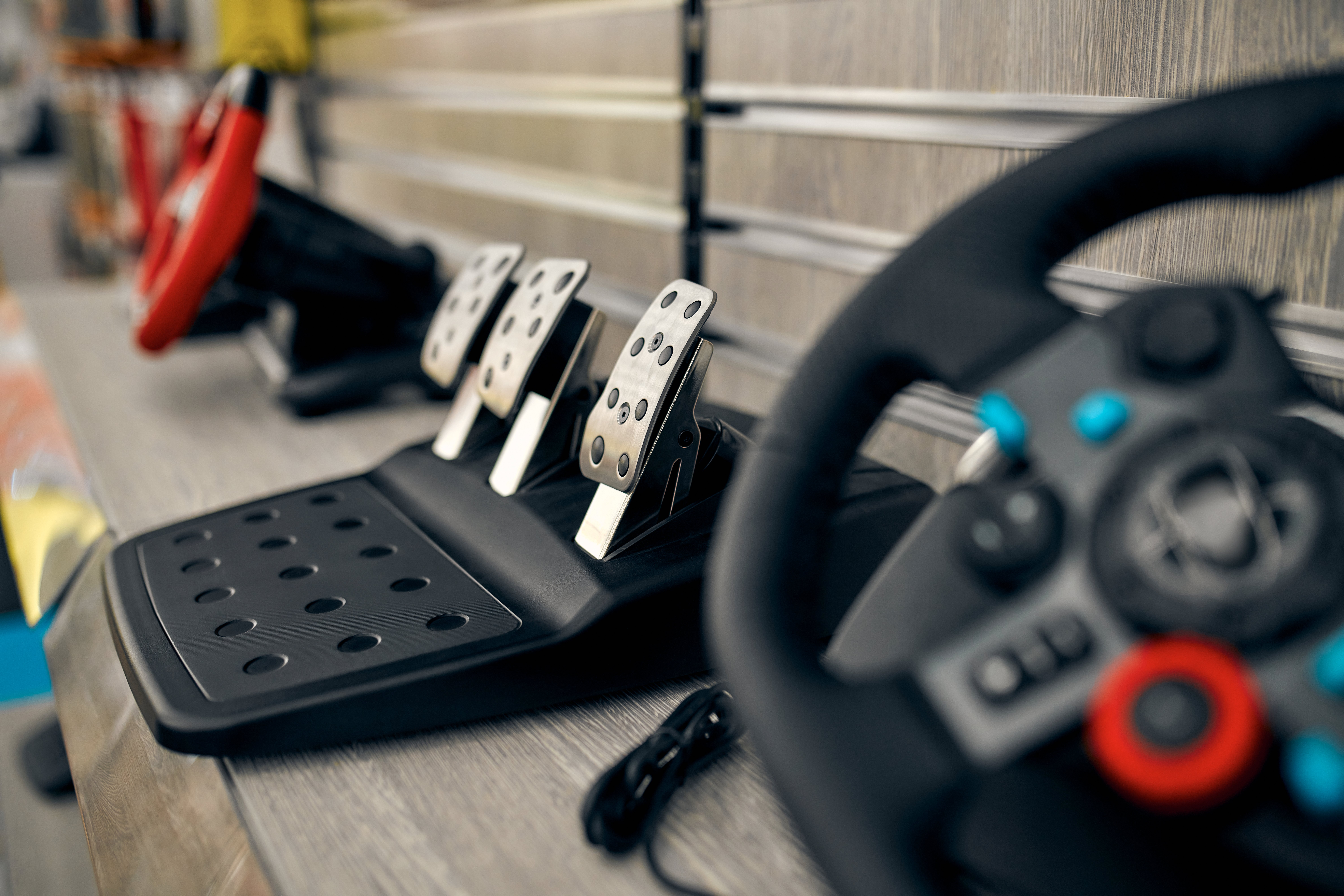
Master the track with the right wheel and wheelbase
Of all the components of a sim racing rig, it’s often the wheel and wheelbase that takes center stage—and for good reason! Your wheel isn’t just an accessory, it’s your direct connection to the virtual road ahead. The wheel becomes an extension of your skill and strategy at every turn and choosing the right one for you is critical!
The force feedback provided to you by your wheelbase gives you crucial feedback about the health of your car and allows you to make the right decisions at just the right time to get ahead. And, let’s face it—racing with a steering wheel is much more fun than with a keyboard!
Just like with other components of your rig, if you’ll be racing primarily in one discipline, you’re better off getting a wheel and wheelbase set that matches your discipline. However, even if you know your discipline, you’ll still have to choose between a gear-driven, belt-driven or direct drive wheelbase!
Gear-driven wheelbases are often the budget-friendly option, providing decent force feedback but with some noise and a slightly notchy feel. Belt-driven wheelbases offer a smoother and quieter operation, delivering strong force feedback and a more immersive racing sensation. However, if you're a serious sim racer looking for unparalleled realism and precision, a direct drive wheelbase is the ultimate choice. These high-end systems provide the strongest and most accurate force feedback, translating every nuance of the road into your hands!
Gomez Sim Industries, Simucube , and Fanatec are a great reference for sim racing wheels and wheelbases. When researching your wheel, make sure it’s compatible with your chassis and that it feels good in your hands.
Bonus realism: adding motion
While all five of the components we’ve gone through above are the basic elements of a sim racing system, some may wish to take their rig beyond sight and sound by adding motion or haptics to their setup!
Adding a motion system to your sim racing rig opens the door to a new dimension of realism as your wheel won’t be the only part of your rig communicating with you—you’ll feel every aspect of your virtual car and be more in-tune with its needs during the race.
Imagine feeling when your tires are losing grip, feeling the texture of the track change when the rain cloud overhead finally breaks and feeling the hum of the engine as your push the accelerator further and further down. Motion systems take what was traditionally an experience limited to sight and sound to the next level and is the ultimate add-on for any sim racing aficionado!
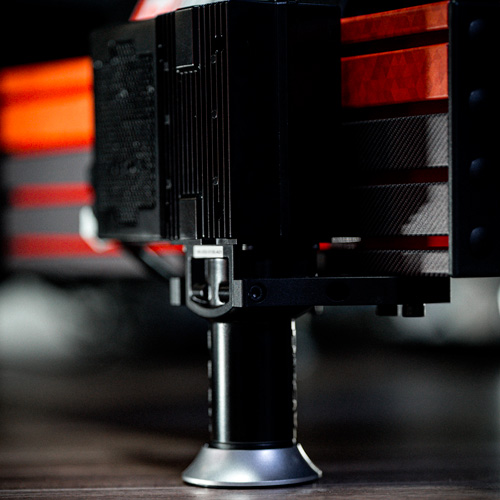
Purchasing a ready-to-go model
Although the majority of new sim racing enthusiasts typically build their own rigs incrementally, there exists an alternative: investing in a pre-assembled, all-in-one solution that demands only one thing from the user: plugging it in.
However, this convenience does come at a premium price. To obtain a price estimate from most sim racing rig manufacturers, you can contact them and specify the desired accessories for your rig, allowing them to offer you options that will meet your specific needs.
Get ready to hit the track
Now that you know all about the essential components of a sim racing rig, you know where to start your quest for added immersion. By properly researching and investing in these components, you’re guaranteed to end up with a sim racing system that will put you in the driver’s seat in a way you’ve never experienced before! Your new setup will equip you with all the tools you need to take your sim racing experience to the next level.

